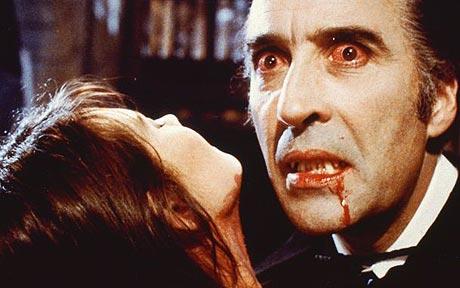The essence of horror is horror. A potent amalgam of fear, terror, and revulsion. The first masterpiece written in the English language, Beowulf, is full of blood and gore. Shakespeare was fond of horror too. I recently saw a production of Macbeth that made liberal use of buckets of the red stuff. And then we have the Gothic novels of the 18th and 19th centuries. Magnificent books, that not only make us shudder, but also explore lofty philosophical ideas.
I’ve always loved horror, but I can’t help feeling that somewhere along the line—over the last 20 years or so—the genre has lost its way. It doesn’t take itself quite so seriously. Is anybody attempting to address the big questions anymore? Does God exist? Is there life after death? Is there more to the universe than meets the eye? Horror is less likely these days to exercise its intellectual muscle. Indeed, the genre has become increasingly associated with younger audiences and teen romance.
Now, I have no problem with books and films that introduce new fans to the genre. Indeed, I would argue that you’re never too young to start reading horror. Most fairy tales, which frequently feature fanged predators and child abduction, are basically horror. This, I consider a wholly good thing (an opinion, might I add, shared by a large number of very distinguished child psychologists). Fairy tales work well because they are horrific. Yet, much of what passes for horror today is, in fact, ‘love story’.
This isn’t a trend started by Stephanie Meyer, author of the Twilight books. Horror has always overlapped with ‘romanticism’, ever since Dr. John Polidori recognized the fictional possibilities of his brooding patient, Lord Byron, and wrote ‘The Vampyre’ back in 1816. Be that as it may, if the unique potency of the genre is to be preserved, romance should be employed in the service of horror, not the other way round.
Of course, vampirism has always been understood as a metaphor for sex. But metaphors are most effective when they are subtle. Metaphors make an appeal to the unconscious and produce unnerving resonances. When the sexual subtext of vampirism is made explicit, we lose all those pleasing, tantalising unconscious resonances, and are left with an experience that lacks richness and complexity. Freud, in his famous essay on the uncanny, suggested that the unnerving feelings we sometimes get when presented with certain objects or situations is attributable to the stirring of unconscious memories. Usually, such memories are traumatic, sexual, or both. It only feels uncanny because we don’t really understand what’s going on. If we did understand, it wouldn’t feel uncanny anymore.
Psychologists haven’t spent a great deal of time trying to work out why horror is such a popular genre, but one of the most persuasive theories suggests that creatures such as werewolves, zombies and vampires, represent exaggerated versions of the primeval threats encountered by our ancestors. Evolution has ensured that we will always take a keen interest in things that move around in the dark and bite, because, at one time, the survival of the species depended on it. If your remote ancestors hadn’t possessed this keen interest, they would have soon become cat-food and you wouldn’t be reading this now. The roots of horror sink deep into the human psyche.
An evolutionary account of horror suggests that for the genre to be successful, certain conventions must be observed. The threats that our ancestors faced were terrifying and utterly alien. There was never any danger of our ancestors sympathizing with the creatures that wanted to kill them. Yet, contemporary horror–particularly the romantic variety—abounds with sympathetic monsters, and thus, horror is severed from its deepest roots. Sympathy arises when we give our monsters an internal psychology. And this, in horror writing, is a relatively recent phenomenon. Before Anne Rice, for example, vampires didn’t really have an inner world accessible to the reader. I have a feeling that real horror requires incomprehension. Horror should return us to the state of our primitive forbears.
When I decided to try my hand at horror, these considerations were uppermost in my mind. I wanted to write a vampire story, but to get back to basics. I wanted it to induce fear, terror, and revulsion, and I did not want my monster to have an internal psychology or be in any way sympathetic. As for romance: well, I allowed myself romantic sub-plots, but the monster I created is the absolute antithesis of Lord Byron or a teenage heart-throb. I was eager to wrestle with some big philosophical questions, and I was intent on producing a book that would appeal to grown-ups.
Why?
Because I love horror. True, it might also be because I’m a middle-aged, reactionary bore. But naturally, my preference is for the more charitable interpretation.
F.R Tallis is a clinical psychologist and novelist. His crime series (written as Frank Tallis) has been nominated for numerous awards and optioned for TV. The Forbidden, published by Macmillan, is a tale of Gothic horror set in 19th century France.










